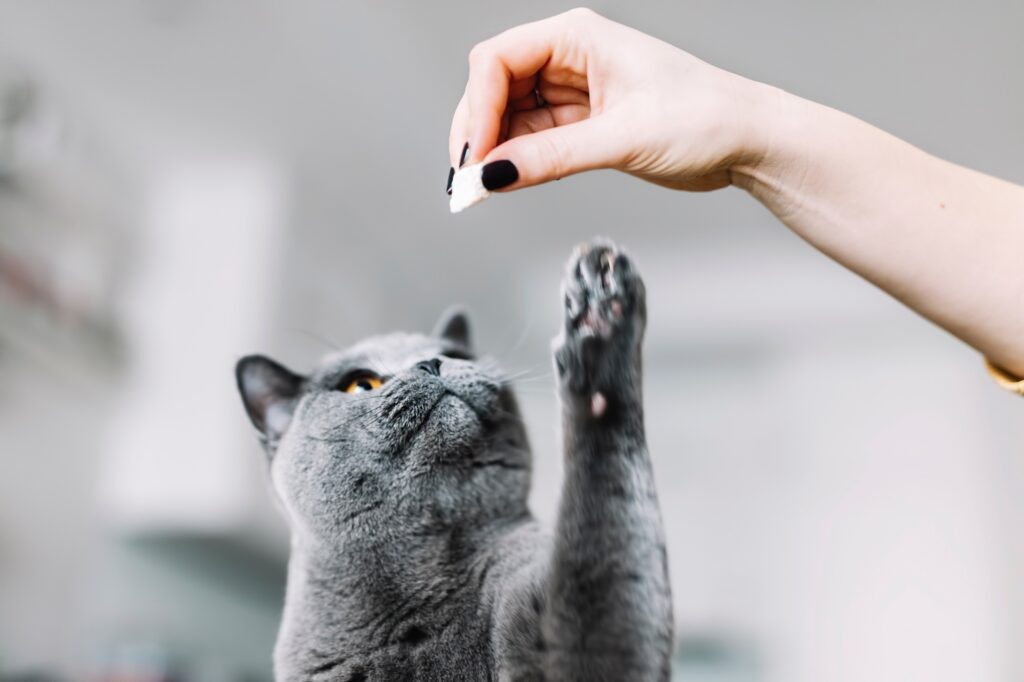Tech Integration for Traceability and Customer Engagement
The pet food industry is undergoing a technological revolution, with packaging becoming a critical touchpoint for brands to differentiate themselves. By 2025, smart labels and interactive QR codes will dominate as tools for enhancing transparency, sustainability, and consumer loyalty. Below, we dissect these trends across five key dimensions:
1. Smart Labels: Bridging Traceability and Sustainability
Smart labels are evolving beyond basic barcodes to integrate IoT sensors, blockchain, and biodegradable materials. These innovations address growing demands for ethical sourcing and environmental responsibility.

Key Applications
- Real-Time Ingredient Tracking:
Sensors embedded in packaging monitor temperature, humidity, and shelf life, ensuring product freshness from factory to bowl. For example, a label could alert distributors if a batch of organic dog treats exceeds safe storage temperatures, reducing waste 11. - Blockchain Transparency:
QR codes linked to blockchain ledgers allow consumers to trace ingredients back to their source. A scan might reveal the farm where free-range chicken in cat treats was raised, certifications (e.g., non-GMO, organic), and carbon footprint data 11. - Eco-Conscious Materials:
Biodegradable smart labels made from algae-based films or edible starch align with the push for zero-waste packaging. These materials decompose within weeks, unlike traditional plastics 11.
Case Study: Colmar’s Spring Festival QR Codes
At the 2025 Colmar Spring Festival, QR codes on event materials provided visitors with real-time updates on schedules, vendor details, and sustainability initiatives 11. Similarly, pet treat brands can use QR codes to showcase ethical sourcing practices, such as partnerships with regenerative farms or carbon-neutral production facilities.

2. Interactive QR Codes: Driving Customer Engagement
QR codes are no longer static links—they are gateways to gamified experiences, personalized content, and subscription services.
Engagement Strategies
- Augmented Reality (AR) Experiences:
Scanning a QR code on a bag of hypoallergenic dog treats could launch an AR game where pets “hunt” virtual treats, fostering brand interaction. This mirrors the Colmar festival’s use of QR codes for guided tours and scavenger hunts 11. - Loyalty Programs:
QR codes can unlock rewards, such as discounts on future purchases or donations to animal shelters. For example, a “Scan-to-Donate” campaign could tie each purchase to wildlife conservation efforts 11. - Personalized Nutrition Guides:
A QR code might direct pet owners to a portal where they input their pet’s breed, age, and health needs to receive tailored feeding recommendations. This aligns with the trend toward hyper-personalization in pet care 11.

3. Regulatory Compliance and Consumer Trust
Stringent regulations (e.g., FDA, AAFCO) and consumer skepticism necessitate verifiable claims. Smart labels and QR codes enable brands to:
- Display Certifications:
Instant access to compliance documents (e.g., organic, gluten-free) builds trust. For instance, a QR code could link to a video of factory audits or lab test results 4. - Mitigate Counterfeiting:
Blockchain-enabled QR codes ensure authenticity, critical for premium brands competing in markets like Amazon 4.
4. Sustainability-Driven Design Innovations
The push for eco-friendly packaging intersects with smart technology:
- Edible QR Codes:
Printed with food-grade ink on compostable packaging, these codes dissolve harmlessly if ingested—ideal for pet products 11. - Reusable Packaging Systems:
QR codes on refillable containers track usage cycles and reward customers for reducing waste. For example, a “10th Refill Free” program could incentivize repeat purchases 11.

5. Challenges and Future Outlook
Adoption Barriers
- Cost: Small-scale manufacturers may struggle with the upfront investment in IoT infrastructure.
- Digital Literacy: Older demographics might find AR interfaces or blockchain data overwhelming.
2025 Predictions
- AI-Powered Dynamic Labels:
Labels that adapt content based on location (e.g., displaying local promotions) or consumer behavior (e.g., highlighting low-calorie options for overweight pets). - Integration with Smart Home Devices:
QR scans could sync with pet feeders to automate portion control based on dietary needs 11.
Conclusion
By 2025, pet treat packaging will transcend its traditional role, becoming a dynamic platform for storytelling, compliance, and loyalty. Brands that leverage smart labels and QR codes to prioritize transparency and engagement will dominate markets like Amazon and Walmart, while aligning with the values of eco-conscious consumers. For deeper insights into tech-driven trends, explore innovations showcased at events like the Shenzhen Pet Expo




